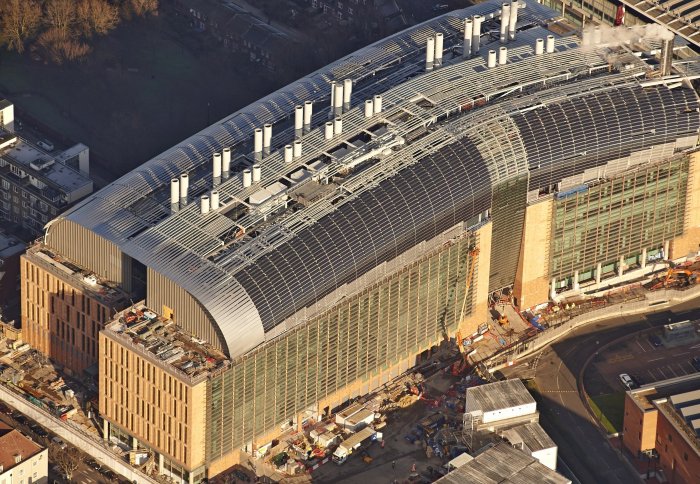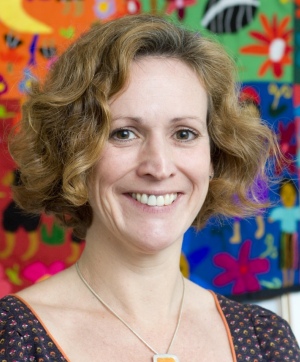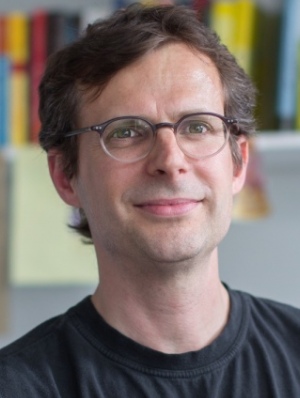Researchers taking up Francis Crick Institute attachments talk about their work

The Francis Crick Institute is due to open officially in early 2016
The first Imperial researchers to take up attachments at the Francis Crick Institute have been announced.
Imperial is one of the founding partners in the Francis Crick Institute, a large interdisciplinary medical research institute based in London’s King’s Cross that will accomodate 1,250 scientists tackling health and disease challenges.
Research at the Crick will help us understand why diseases develop and find new ways to prevent, diagnose and treat illnesses such as cancer, heart disease, infections, and neurodegenerative diseases.
The other founding partners are the Medical Research Council, Cancer Research UK, the Wellcome Trust, University College London and King’s College London.
The Crick’s new building is due to open officially in early 2016.
Several Imperial staff will then be joining the institute on attachments (see sidebar), giving them the opportunity to collaborate with other world-leading biomedical scientists and researchers in related fields.
Professor Maggie Dallman, the Associate Provost for Academic Partnerships at Imperial, said: “The Crick provides a unique opportunity to bring researchers together from different institutions and academic backgrounds, on a large scale, in order to gain a better understanding of why disease develops and to find new ways to diagnose, treat and prevent illnesses. It will form an unparalleled cross-institutional crucible of science and engineering know-how, focused on tackling the health and disease challenges we face this century. I am excited about what lies ahead and I wish every success to the researchers who will be undertaking these first attachments.”
Below, three of the researchers involved with the attachments tell us more about the science that they will be carrying out and what they are looking forward to.
PROFESSORS WENDY BARCLAY (MEDICINE) AND PETER OPENSHAW (NATIONAL HEART AND LUNG INSTITUTE)

Professor Wendy Barclay
Professors Wendy Barclay and Peter Openshaw will be establishing an influenza hub at the Crick, bringing together experts in influenza virus research from Imperial and the Crick to create a group with expertise in molecular virology, immunology and respiratory disease. The aim is to develop an understanding of the molecular and cellular pathways that underlie disease, in order to guide future treatments with confidence.
Professor Barclay said: “Being part of the new Crick is a wonderful opportunity for my group to interact with first rate biomedical scientists from institutions outside Imperial, and have access to wonderful facilities.
"The way the Crick building is designed to get scientists from different backgrounds to interact and make ‘discoveries without boundaries’ is a truly worthwhile philosophy, and the strong emphasis on public engagement also fits very well with our own thinking.
“We will be bringing our own expertise in influenza viruses, and interacting with Crick fellows to try to understand why some influenza viruses, like H5N1 and H7N9 avian flu, make people so much more severely ill than others.”
Professor Openshaw said: “The Crick will be an exciting opportunity for us to get involved in some of Europe’s best science at another amazing UK powerhouse. I’m looking forward to getting to know leaders and groups at the Crick that work in areas that will complement our own, and hope that my knowledge of clinical medicine, pulmonology and the immunology of influenza will be useful to them.”
DR GUNNAR PRUESSNER (MATHEMATICS)

Dr Gunnar Pruessner
Theoretical physicist Dr Gunnar Pruessner will be the first Imperial academic to join the Francis Crick Institute on a sabbatical.
Eukaryotic cells – the cells that make up animals, plants and fungi – contain tiny rods called microtubules that transport molecules and materials within and between cells. On his year-long sabbatical, Dr Pruessner will be analysing these microtubules, which have an essential role in supporting the structure and function of normal, healthy cells.
Microtubules are made up of proteins that are continually joining together and dismantling themselves according to the cells’ needs. Dr Pruessner will be using statistical mechanics to explore the precise mechanisms that enable these proteins to work together.
He explained: “Statistical mechanics enables us to explore how small pieces of matter do stuff together. An interaction between two proteins might be very simple, but when there are several of these simple interactions, the knock-on effects can be complicated. This is what we’ll be trying to get to grips with in order to better understand how microtubules operate.”
Dr Pruessner will be working with a team led by the cell biologist Dr Thomas Surrey, an expert in the internal organisation of eukaryotic cells and a group leader at the Crick.
Article text (excluding photos or graphics) © Imperial College London.
Photos and graphics subject to third party copyright used with permission or © Imperial College London.
Reporter
Laura Gallagher
Communications Division
Sam Wong
School of Professional Development